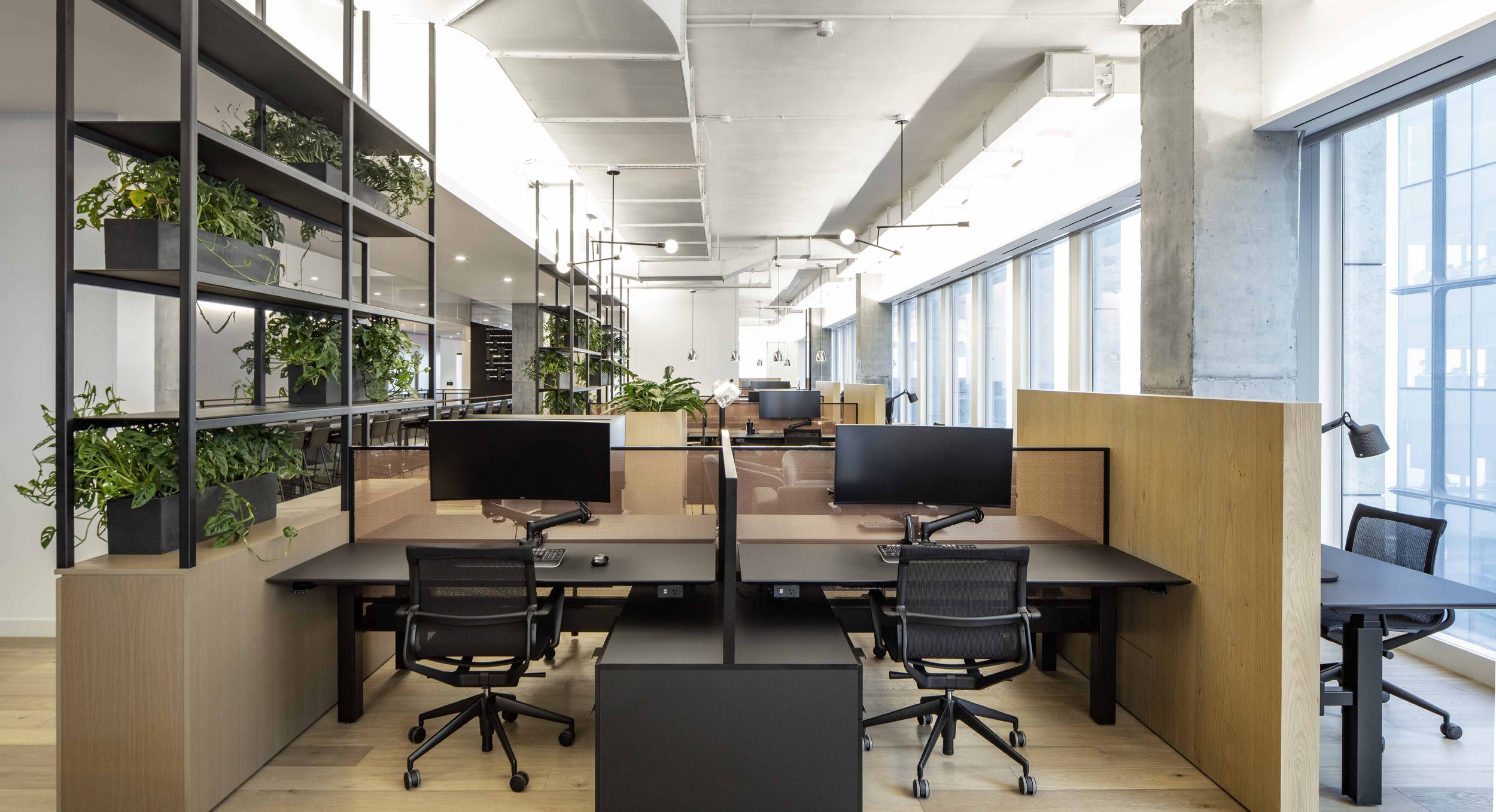The recent pandemic has ushered in a new era of work that embraces flexibility, mobility, and collaboration, challenging the traditional approach of segregating executives/leadership from other employees. Companies are embracing this cultural shift in their workplace design.
In recent projects, a decrease in assigned private office spaces and an increase in shared, collaborative spaces have been observed. Some clients have opted for a remarkably low ratio of private offices to workstations, with a few even forgoing private offices altogether. Simultaneously, companies are working to bring all of their employees back to the office, necessitating consideration of their wants and needs upon their return to the space.
Clients and design partners are focusing on designing and engineering workstations that can provide employees with the features and benefits traditionally associated with a private office. A trend has emerged where clients rely on a consistent set of workstation features aiming to provide all employees with both privacy and renewed opportunities for collaboration.
Recently, Innovant collaborated with design partners to create a unique headquarters for a popular lifestyle and hospitality company. The project stood out for its unconventional approach, featuring a notably low number of private offices and unique workstation layouts and finishes.
One of the clients' main motivators for minimizing the number of private offices in their space was the promotion of a new culture of equality and collaboration. They desired to create opportunities for those who previously worked separately to collaborate more regularly. Ultimately, the workstation design for this project prioritized collaboration without compromising privacy.
As private offices traditionally symbolize status within a company, their minimization has been accompanied by an increase in the inclusion of "manager's stations" in recent designs. These spaces exist among regular workstations but are slightly elevated, allowing executives to collaborate with their team while remaining somewhat separated.
The workstations in this space were designed with privacy panels made of perforated metal, providing privacy while maintaining acoustic flow, promoting collaboration, and preventing panels from compromising the open feel of the workspace. Tall, veneer-clad end panels were also included to separate general workstations from manager’s stations, achieving a more private feel for leadership while keeping them within reach of their team.
The workstations in this space are elevated on every level and boast integrated technology features and intricate storage options, reflecting the client’s desire to create an exciting and high-end workspace for all employees. Features like locking laptop storage and Bluetooth height adjustability—crucial components for the client—were included, even if they might have been omitted in previous projects due to cost constraints.
Office design is continually evolving to meet the changing needs of clients and workplaces. While the movement away from private offices is not universal, it highlights the importance of dynamic, high-end workstations that facilitate both collaboration and focused work in a successful workplace design. Understanding this need is crucial to creating shared workspaces that offer the same benefits as private offices while fostering a fresh culture among employees.
For Innovant, the loss of private offices in any space means more to deliver with each workstation. Whether in the form of space separation or integrated storage, elevated workstations have assisted many of our clients in a successful transition out of private work environments and into spaces where collaboration and communication are right at employees' fingertips.
Reach out to your local Innovant Representative to learn more about our tailored approach to workstation and private office design on our Contact Us page.







